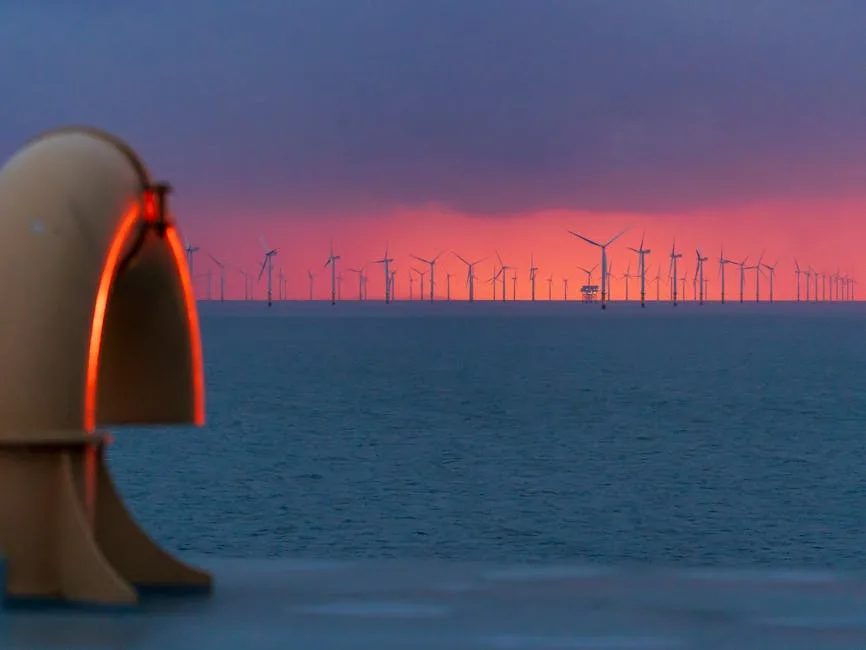
Renewable energy has become a cornerstone of modern efforts to combat climate change and reduce reliance on fossil fuels. Sources like solar, wind, and hydropower offer sustainable alternatives that minimize environmental harm while meeting global energy demands. According to recent data, renewable energy accounted for **29% of global electricity generation** in 2022, with solar and wind energy leading the expansion1. This article examines the types of renewable energy, their benefits, and their relevance in today’s energy landscape.
Types of Renewable Energy
Renewable energy encompasses several key sources, each with distinct technologies and applications. **Solar energy**, for instance, includes photovoltaics (PV) and concentrated solar power (CSP), with a global capacity exceeding 1,200 GW2. Large-scale projects like the Topaz Solar Farm in California demonstrate its potential, generating 550 MW of electricity. **Wind energy**, another major contributor, has reached over 900 GW in global capacity, with offshore wind farms like Burbo Bank in the UK offering higher efficiency due to consistent wind speeds3.
Hydropower remains the largest renewable source, contributing approximately **16% of global electricity**4. Projects such as China’s Three Gorges Dam, with a 22.5 GW capacity, highlight its scalability. Geothermal energy, though less widespread, provides reliable electricity and heating, as seen in Iceland’s Krafla Power Station. Biomass and biofuels, derived from agricultural waste and algae, also play a role, producing 180 billion liters annually5. Ocean energy, including tidal and wave power, is emerging, with South Korea’s Sihwa Lake Tidal Power Station generating 254 MW.
Benefits of Renewable Energy
The shift to renewable energy offers significant environmental, economic, and security advantages. Environmentally, renewables reduce CO₂ emissions by an estimated **2.1 billion tons annually**6. Economically, the sector created **12 million jobs globally** in 2022, underscoring its role in workforce development7. Energy security is another critical benefit, as renewables diversify supply chains and reduce dependence on volatile fossil fuel markets.
Cost reductions have further accelerated adoption. Solar PV costs, for example, have dropped **89% since 2010**, making it increasingly competitive8. Governments worldwide are supporting this transition through policies like feed-in tariffs and tax incentives, such as the U.S. Inflation Reduction Act. These measures address challenges like intermittency and land use, ensuring renewables remain a viable long-term solution.
Global Trends and Future Outlook
Countries like Germany, China, and Iceland illustrate the potential of renewable energy. Germany sourced **46% of its electricity** from renewables in 2022, while China leads in solar and wind capacity with over 1,200 GW combined9. Iceland, meanwhile, relies entirely on geothermal and hydropower for electricity. The International Energy Agency (IEA) projects that renewables will cover **95% of global power expansion** by 2026, driven by emerging technologies like green hydrogen and perovskite solar cells10.
For professionals in energy, policy, and infrastructure, understanding these trends is essential. Renewable energy not only mitigates climate risks but also presents opportunities for innovation and economic growth. As the sector evolves, staying informed about technological advancements and policy developments will be key to leveraging its full potential.
Conclusion
Renewable energy is transforming the global energy landscape, offering sustainable alternatives to fossil fuels. With significant environmental and economic benefits, it is poised to dominate future energy expansion. Policymakers, businesses, and individuals must continue to support and invest in these technologies to ensure a cleaner, more secure energy future.
References
- IRENA. (2023). Renewable Capacity Statistics.
- IRENA. (2023). Renewable Capacity Statistics.
- GWEC. (2023). Global Wind Report.
- IEA. (2023). World Energy Outlook.
- USDA. (2023). Biofuel Production Report.
- IEA. (2023). World Energy Outlook.
- IRENA. (2023). Renewable Energy and Jobs.
- Lazard. (2023). Levelized Cost of Energy Analysis.
- Fraunhofer ISE. (2023). Energy Charts.
- IEA. (2023). World Energy Outlook.






